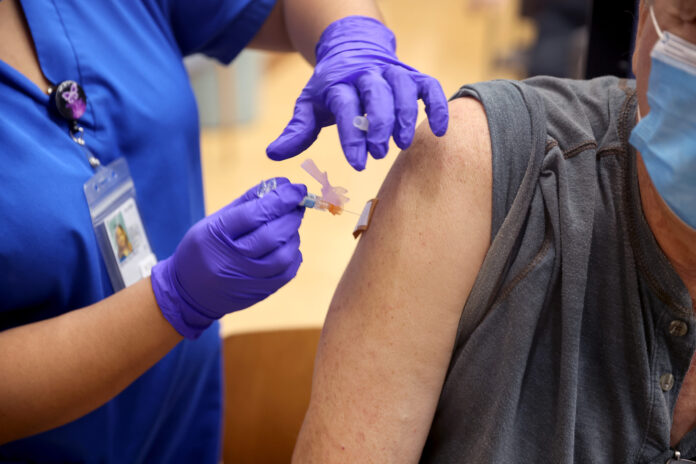
Covid-19 cases could start going up within a month, marking a fall and winter surge of the virus along with an expected uptick in flu infections, a leading health official said Wednesday.
“While we are all tired of talking about Covid-19, Oregonians are still getting sick with the disease,” Dr. Dean Sidelinger, the state’s chief health officer, said in an online media briefing with.
The current numbers are good: The state’s seven-day average dropped from 580 cases a day on Sept. 7 to about 480 this Tuesday. Hospitalizations have fallen from a peak of about 460 on July 17 to nearly 250 on Wednesday. And the federal Centers for Disease Control and Prevention classifies nine counties in eastern and southern Oregon at medium risk, which is about the same as the month before.
But one indicator shows a rise: Wastewater sampling conducted by Oregon State University in some areas has gone up. This rise coincides with rising infections in Europe. Throughout the pandemic, infection and hospitalization trends in Europe have shown up in the U.S. a few weeks later, first on the East Coast and then in the West.
In Europe on Wednesday, health officials said Covid cases are on the rise and that a surge was likely, Reuters reported.
Oregon officials also expect a rise in flu infections this winter, based on trends in the Southern Hemisphere where cases during its winter from June through August were higher than the year before.
Sidelinger said the Oregon Health Authority has no plans to impose any new mandates. He said any new restrictions would be based on hospital capacity. Although hospitalizations for Covid are down, Oregon’s hospitals are straining under workforce shortages and an increase in patients with more acute illness because they postponed care during the pandemic, hospital officials say.
Hospitals are still straining under disruptions to care during the pandemic and health care workforce shortages.
– Dr. Dean Sidelinger, state health officer
“Hospitals are still straining under disruptions to care during the pandemic and health care workforce shortages,” Sidelinger said. “We continue to receive reports from hospitals about people who are in the emergency department waiting for beds, people waiting to be discharged.”
He indicated that any restrictions would be based on a lack of hospital staff to treat those who need care.
Sidelinger urged Oregonians to get boosted. An updated Pfizer booster for 5- to 11-year-olds was approved this week by federal officials and the Western States Scientific Safety Review Workgroup that includes experts from Oregon, Washington, Nevada and California. Moderna’s updated vaccine has been approved for ages 6 and older. The latest boosters target the original strain and the latest variants, BA.4 and BA.5. The latter is now dominant in Oregon.
The updated booster has been given to more than a quarter of a million people in Oregon – about 6% of the population. That compares with 3.5% nationwide.
Sidelinger said that rate needs to go up to better protect Oregonians.
“Seven in 10 Oregonians have received at least one Covid-19 vaccine, and we would hope that seven in 10 Oregonians would also receive an updated booster,” he said.
Health officials recommend people get a booster two months after their last vaccine and three months after an infection.
With lower demand, the state has started closing its high-volume vaccine sites. To get a shot, check the state’s website. Health officials say it’s safe to get a Covid and flu shot at the same time.
Monkeypox
Sidelinger also reported a downswing in monkeypox cases, though he cautioned that the virus is still spreading.
“The number of new daily cases being reported to OHA has slowed significantly over the last two months, with about 10 cases per week in September compared to about 30 cases per week at the peak of the outbreak in early August,” Sidelinger said.
So far, 230 people, including two children, have been infected in nine counties: 11 in Clackamas, two in Columbia, one in Coos, one in Hood River, 22 in Lane, eight in Marion, 157 in Multnomah, one in Union and 27 in Washington. About 22% of those infected come from Spanish speaking countries, nearly double their share in the state’s population.
The majority – 65% – are gay or bisexual, data shows. The virus is spread through prolonged close contact, often through sex.
Sidelinger attributed the drop in cases to behavior changes and an increase in vaccinations. The state has urged providers to work with community groups and stage vaccine events at venues such as Pride events to help protect susceptible individuals.








